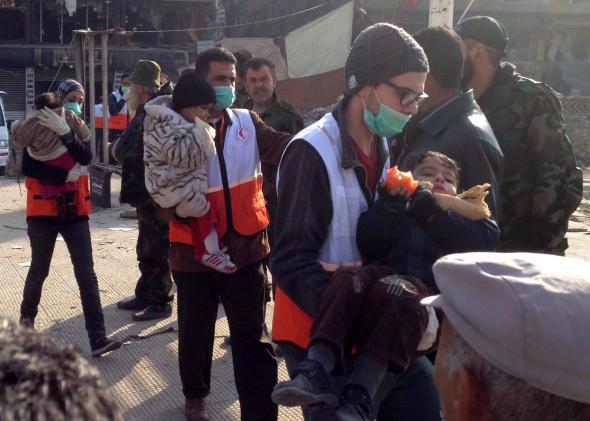2013 was the deadliest year on record for aid workers, according to a new report from a humanitarian consulting group. There were 270 attacks on aid workers last year, up from 170 the previous year; 155 aid workers were killed, 171 injured, and 134 kidnapped, according to the U.K.-based Humanitarian Outcomes. All of these numbers substantially increased:
While attacks were recorded in more than 30 countries, violence against aid workers is actually fairly localized phenomenon. Three-quarters of the attacks took place in just five countries: Afghanistan, Syria, South Sudan, Pakistan, and Sudan. These are, not surprisingly, all locations “experiencing armed insurgencies and/or failures of governance and rule of law.” The report argues that the numbers do “not reflect a growing worldwide trend of targeting aid workers, but is mostly limited to this small number of cases where conflict has broken out.”
Just because a country isn’t on that list doesn’t mean that it’s safe for aid workers. Somalia, for instance, saw a reduction last year mainly because agencies reduced their presence there. Medecins Sans Frontieres, for instance, pulled out entirely in 2013, after 22 years of operating in the country, because of attacks on its staff.
About 43 percent of the attacks targeted national NGOs rather than international or U.N. organizations. Overall, workers seem to be most vulnerable when traveling. More than half of the incidents were roadside ambushes or attacks.
This year is certainly shaping up to be another grim one in the countries noted above. The U.N. reported earlier this month that five aid workers had been killed by a militia group in South Sudan. Afghanistan has seen a number of attacks on aid workers as well.
The political scientist Chris Blattman put forward a prediction recently that “in 20 or 30 years, most of the still poor countries will be today’s fragile states. Everywhere else will probably have reached middle-income levels.” While that could be a slight overstatement, it’s certainly true that humanitarian crisis and political instability tend to be mutually reinforcing and that the same factors that create the need in some countries for emergency aid make them the most dangerous places for aid workers to operate.
